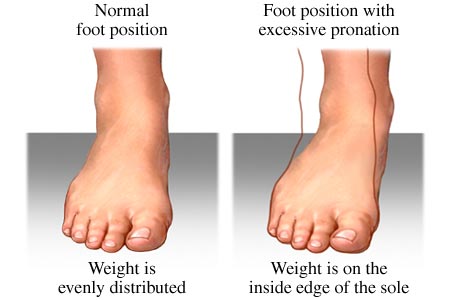Bunions All You Need To Know
Overview
 A bunion, or Hallux Valgus, is a foot deformity characterised by deviation of the bones around the big toe joint of the foot. As a result, there is a large exostosis or bony lump on the inside of the foot and the toe is pointed across towards the smaller toes. It is a common problem, more so in women and has been attributed to tight fitting footwear. This article will cover the basics of bunions, what it is due to, and what treatment is available.
A bunion, or Hallux Valgus, is a foot deformity characterised by deviation of the bones around the big toe joint of the foot. As a result, there is a large exostosis or bony lump on the inside of the foot and the toe is pointed across towards the smaller toes. It is a common problem, more so in women and has been attributed to tight fitting footwear. This article will cover the basics of bunions, what it is due to, and what treatment is available.
Causes
Many problems that occur in the feet are the result of abnormal pressure or rubbing. One way of understanding what happens in the foot due to abnormal pressure is to view the foot simply. Our simple model of a foot is made up of hard bone covered by soft tissue that we then put a shoe on top of. Most of the symptoms that develop over time are because the skin and soft tissue are caught between the hard bone on the inside and the hard shoe on the outside. Any prominence, or bump, in the bone will make the situation even worse over the bump. Skin responds to constant rubbing and pressure by forming a callus. The soft tissues underneath the skin respond to the constant pressure and rubbing by growing thicker. Both the thick callus and the thick soft tissues under the callus are irritated and painful. The answer to decreasing the pain is to remove the pressure. The pressure can be reduced from the outside by changing the pressure from the shoes. The pressure can be reduced from the inside by surgically removing any bony prominence.
Symptoms
The signs and symptoms of a bunion include a bulging bump on the outside of the base of your big toe, swelling, redness or soreness around your big toe joint, Thickening of the skin at the base of your big toe, Corns or calluses, these often develop where the first and second toes overlap, persistent or intermittent pain, restricted movement of your big toe. Although bunions often require no medical treatment, see your doctor or a doctor who specializes in treating foot disorders (podiatrist or orthopedic foot specialist) if you have persistent big toe or foot pain, a visible bump on your big toe joint, decreased movement of your big toe or foot, difficulty finding shoes that fit properly because of a bunion.
Diagnosis
Although bunions are usually obvious from the pain and unusual shape of the toe, further investigation is often advisable. Your doctor will usually send you for X-rays to determine the extent of the deformity. Blood tests may be advised to see if some type of arthritis could be causing the pain. Based on this evaluation, your doctor can determine whether you need orthopaedic shoes, medication, surgery or other treatment.
Non Surgical Treatment
When a bunion first begins to develop, take good care of your feet. Wear wide-toed shoes. This can often solve the problem and prevent you from needing more treatment. Wear felt or foam pads on your foot to protect the bunion, or devices called spacers to separate the first and second toes. These are available at drugstores. Try cutting a hole in a pair of old, comfortable shoes to wear around the house. 
Surgical Treatment
Surgery is a last option for those with advanced and painful bunions that do not respond to any other treatment. The surgical operation to correct the deformity from a bunion is called a bunionectomy, which typically involves removing bony growth of the bunion, re-positioning ligaments and tendons, and realigning the bones of the toe joint. Surgery is usually a day procedure performed with a local anaesthetic. The bones may be stabilised in their new position with screws or pins. Hardware may even include absorbable pins that are broken down by the body after a few months. You can expect a 6 - 8 week recovery period during which crutches are usually required. Surgery is often successful but sometimes the big toe moves back to its previous deviated position. Proper footwear and orthotics reduces the chances of surgical failure.